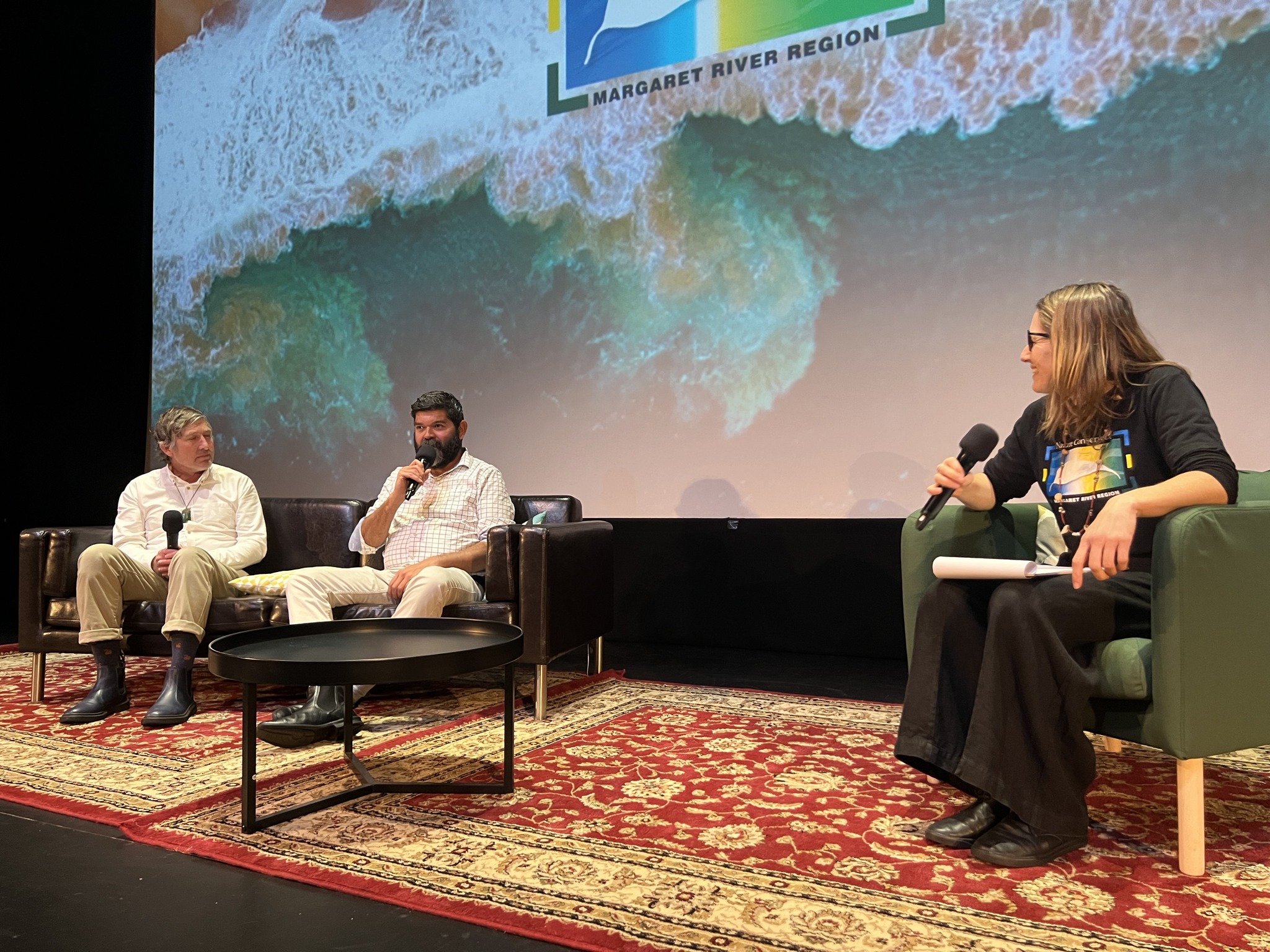An evening of fungi, culture and resilience captivated a packed audience at the latest Environmental Sundowner hosted by Nature Conservation Margaret River Region on Thursday night at Margaret River HEART.
The event began with a short screening of the acclaimed IMAX documentary Fungi: Web of Life, narrated by Björk, before three guest speakers brought science, culture and lived experience together in a thought-provoking panel.
Nature Conservation’s new Chief Executive Officer Aaron Jaggar opened with a moving welcome in Māori from his native New Zealand and said it was a privilege to step into the role of protecting the unique nature of the Margaret River region.
He went on to share his personal story of living through the 2011 Christchurch earthquake, which killed 185 people, injured thousands more and left entire suburbs permanently uninhabitable. “Unless you’d been there before, you couldn’t comprehend the scale of the destruction,” he said. “The land sat there. There was a darkness over the area. But at the same time, there seemed to be a massive opportunity – to really change things. Not many cities get that chance. Once they’re built, they’re built.”
Mr Jaggar described how devastated “red zone” neighbourhoods were gradually transformed into new wetlands, forests, cultural spaces and even a fungi garden. “There was an opportunity to turn a red zone into a green zone,” he said. “And people flocked to be part of it, because while we were healing the land, we were also healing ourselves. The city is healing, the land is healing and the people are healing.” He said those lessons of resilience, regeneration and community spirit are ones he hopes to nurture in his work at Nature Conservation Margaret River Region.

Wadandi cultural custodian Zac Webb built on the theme of resilience, emphasising how fungi form an invisible but vital part of interconnected Country. He explained that fungi sustain and spread through relationships with wildlife such as quendas and woylies, which eat them and carry their spores across the landscape. Even dingoes, he noted, once played a role in dispersing fungi through their scats, paws and coats.
Dr Tom May, one of Australia’s foremost mycologists from the Royal Botanic Gardens Victoria, joined via Zoom to round out the panel. He shared insights into fungi’s role in ecology and conservation, highlighting their essential function in almost every ecosystem on Earth. He said fungi connect trees and plants through vast underground networks, they recycle nutrients, and they underpin the health of animals and soils. Beyond ecology, they show us how to be resilient, flexible and creative in how we live.

Guests enjoyed a complimentary drink, light supper and the chance to put questions directly to the speakers in a lively audience Q&A that stretched the conversation late into the evening, hosted by Nature Conservation’s engagement officer Jodie Passmore.
Mr Jaggar said the event perfectly demonstrated the purpose of the Sundowner series. “Fungi are the hidden connectors in nature’s web, but they’re also metaphors for how communities adapt, regenerate and endure change. Last night showed that when we bring people together to listen, share stories and learn, the connections we build are just as powerful as the science.”
Launched in 2022 with support from the Shire of Augusta-Margaret River, Nature Conservation’s Environmental Sundowner series has now hosted 12 events. Each one blends expert speakers with a welcoming, social atmosphere to spark conversations on the big issues facing nature, people and place.

